According to stats from the new SaleCycle 2023 Ecommerce Stats & Trends Report – and previous reports – mobile accounts for the majority of visits to etailers, as much as 75% compared to desktop.
A decade on from the release of the first iPhone, mobile shopping is massive. Much of this is thanks to Apple, and the many smartphones which followed, but there are still clear obstacles when it comes to mobile commerce.
Mobile conversion rates continue to lag behind desktop, even years after the device shift to mcommerce. In this article, we analyse the reasons for mobile conversion rates lagging behind desktop and why cart abandonment is higher for mcommerce, despite the ever-evolving use of mobile shopping.
Mobile vs. Desktop Sales
Mobile sales currently stand at 55.25% which is over half of all sales, and this percentage bodes more significantly when we take a look at mobile traffic volume. However, mobile conversion rate growth isn’t as significant.
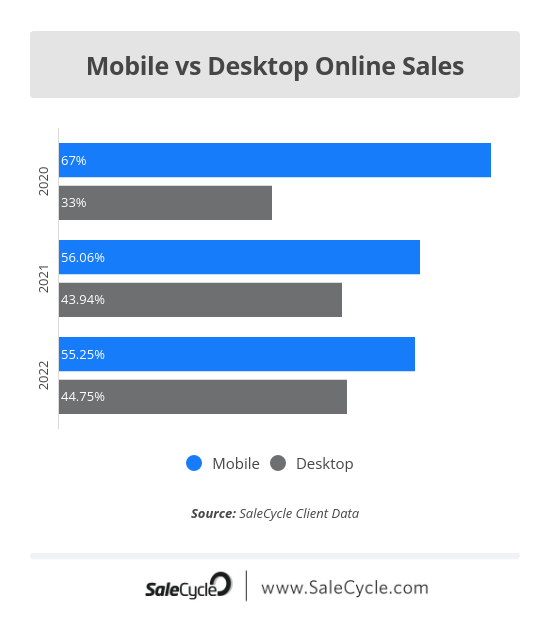

Mobile vs Desktop Traffic
It seems that people are happy to browse on mobile, but many still prefer to buy on desktop. This online behaviour, in turn, causes high browse abandonment rates. It’s important to gain an understanding of why this is the case when tailoring a well-rounded marketing and business plan.
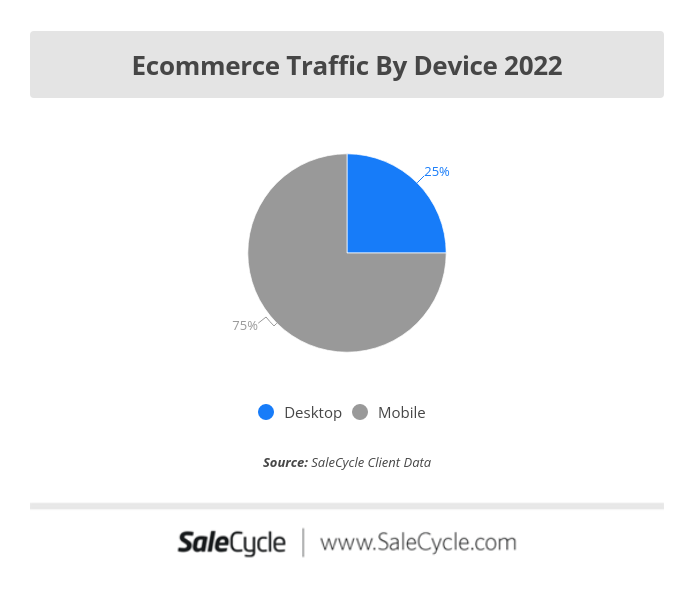

There are several reasons why people prefer to buy via laptop or PC. For one, it can be easier to navigate around a site and view images on a bigger screen. Some shoppers may browse on mobile and select products later on. So, with this being the case, brands must improve their mobile user experience, optimising mobile forms around the checkout funnel could have a major impact. View the mobile form design examples to see how you can do this.
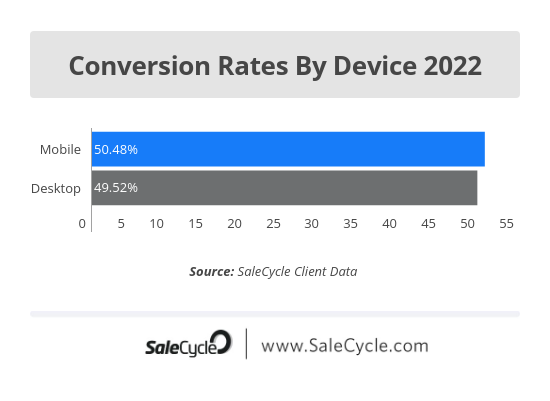

Online Traffic By Sector
People are more likely to buy on a desktop when purchases are more complex. As well as learning what device they will likely buy on (depending on the ecommerce sector, item or service), it’s also beneficial to know when people shop online.
Travel purchases for example, are generally more expensive and complicated. According to our 2023 report, 45% of consumers completed their booking via mobile compared to 55% on desktop.
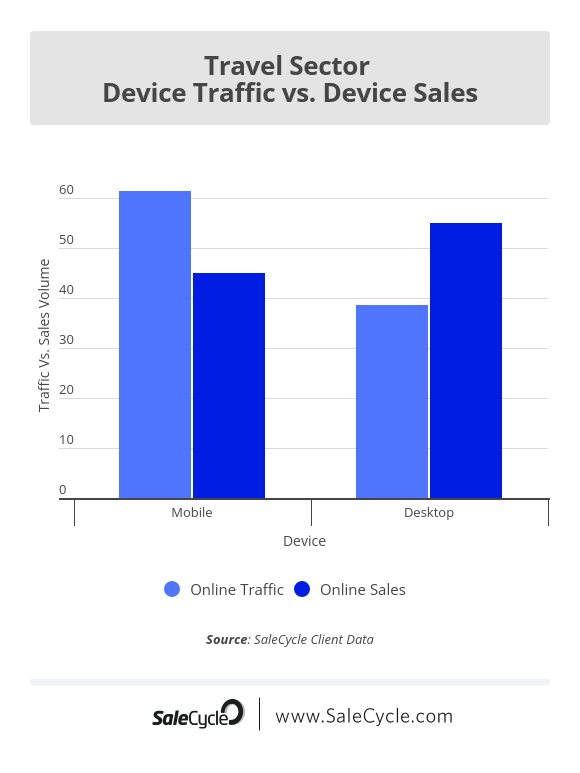

We can see from the share of traffic by device and industry charts that mobile has been gaining more market share in all sectors. The biggest swing has been in retail, with mobile traffic growing by almost 8% over three years.
Mobile vs desktop conversion rates have slightly improved, which makes sense given the growth of mobile traffic. However there’s still growth to be had in all sectors for mobile sales, specifically in Travel and Retail.
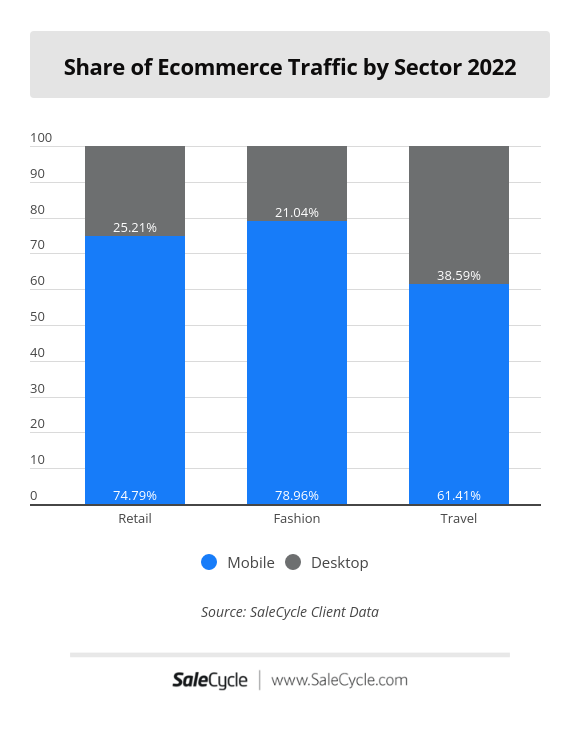

Why is this happening? The biggest issue behind lower mobile conversions is the checkout process. So how can checkout be made easier? Here are 5 ways to increase your mobile conversion rate compared to desktop.
5 Ways To Increase Mobile Conversion Rates
1. Create A Guest Checkout
The first is creating a guest checkout. People hate registering before they begin a purchase, and it seems like hard work for mobile shoppers, so providing a guest checkout option is one way to improve conversion rates.
It’s a barrier for customers, and one that isn’t necessary, as they can complete registration after purchase anyway. Making forms easier and faster reduces hassle for shoppers, and reduces sources of friction where people might abandon checkout. This shows the importance of customer service because making the user experience easier for your customers will increase your customer loyalty and retention.


2. Autofill Forms
Sites can allow users to autofill address and payment details saved on their phone’s browser, or postcode lookup tools to reduce the number steps customers need to take.
Small details matter, such as defaulting to the most appropriate smartphone keyboard, like the numeric version for entering payment card details. It’s about making it easier for customers through marginal improvements.
Mobile is a challenge for retailers, but now that customers have shown they’re willing to browse and buy on mobile, it’s all about making the payment process smooth and easy for shoppers.


3. Include A Variety of Payment Methods
Ecommerce payment options matter too, and providing alternatives can make it easier for mobile shoppers. Card details take time to enter, but PayPal and digital wallet options like Apple Pay can make payment fast and smooth.
Mobile is a challenge for retailers, but now that customers have shown they’re willing to browse and buy on mobile, it’s all about making the payment process smooth and easy for shoppers.


Increase Mobile Conversion Rate by Improving the Checkout Process
If lower mobile conversion rates are due to checkout, what can websites do to address this issue?
In short, it’s about ensuring that the process works as well as possible on mobile, and that the work of completing forms is minimal.
Improve Mobile Forms
Well designed mobile forms can make a big difference to conversion. They reduce friction, make requirements clear to users, and minimise basket abandonment.
Forms need to be easy to complete on mobile, with good visual design, clear labels and helpful error messaging as well as being as short as possible to reduce user effort.
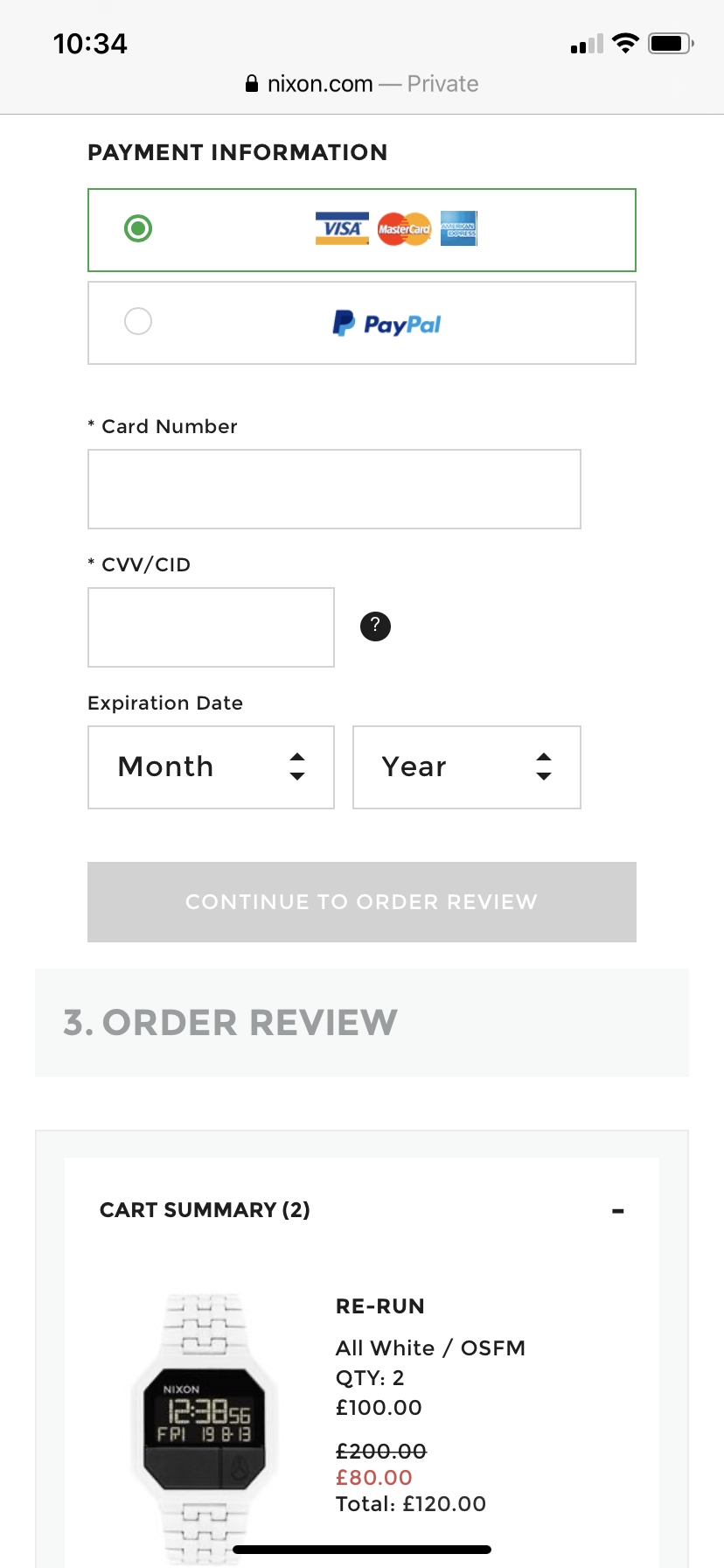

Add Shortcuts for Mobile Users
Any features that reduce effort help, and this is where retailers can use some smartphone features to their advantage.
For example, passport or credit card scanning options can save users the effort of entering data, and reduce effort during checkout.
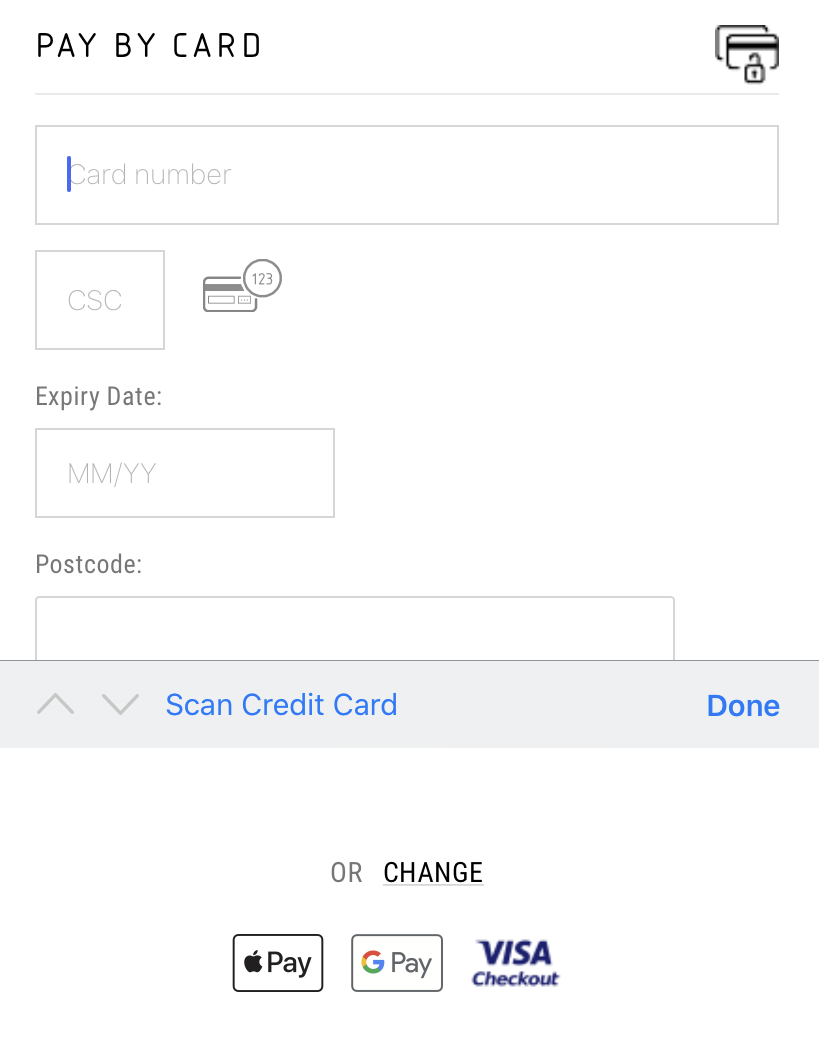

Little details, such as defaulting to the most appropriate touchscreen keyboard for each field (as Monsoon does for phone number entry) or using autofill to populate form fields all help to save time by making data entry easier.
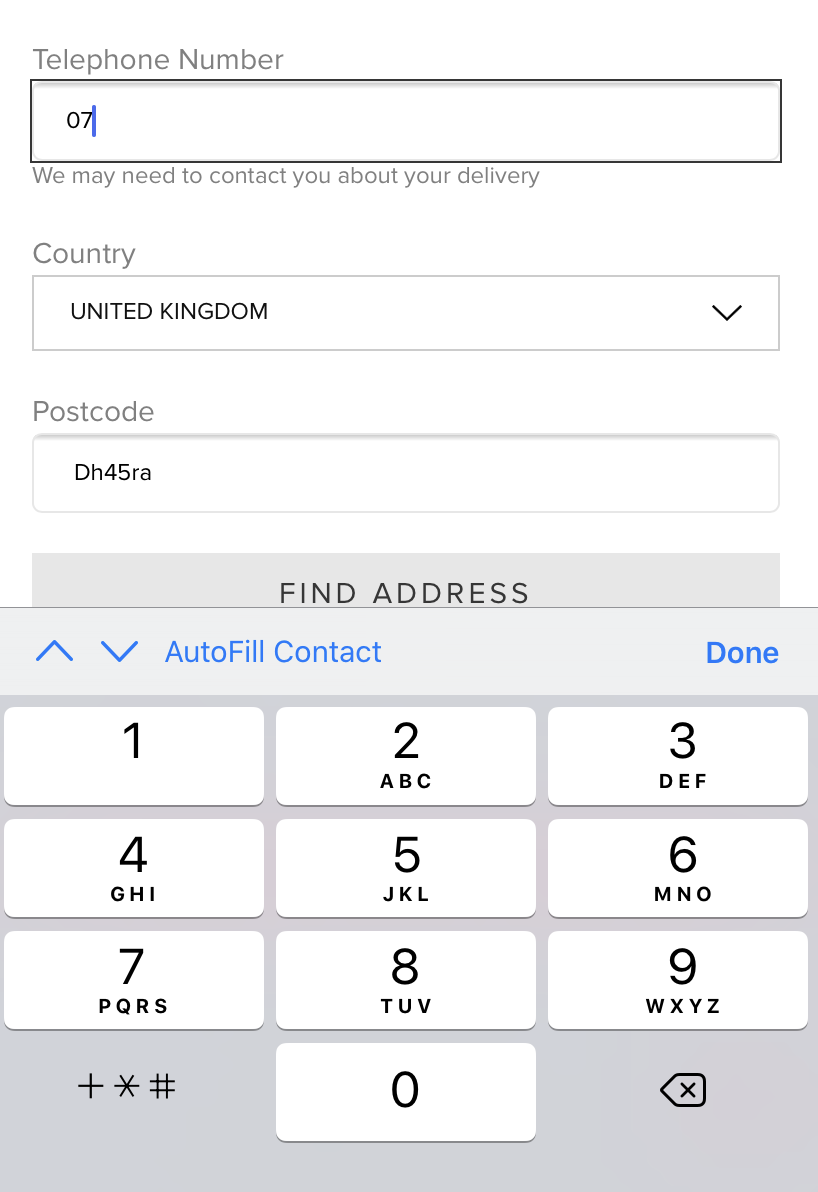

Simplify the Booking Process
Of the sectors shown in the data above, travel faces the biggest challenge on mobile, as it’s generally more complicated to book travel than many retail purchases.
Holidays, for example, may require the choice of hotels and flights, and users need to enter data such as passport numbers, traveller details and in-flight options in addition to the usual address and payment data.
For mobile, the key is to make the online travel booking process as mobile-friendly as possible, with forms designed for mobile.
For example, single column design and larger form fields, as on this Best Western checkout form, allow users to enter data and minimise user errors.
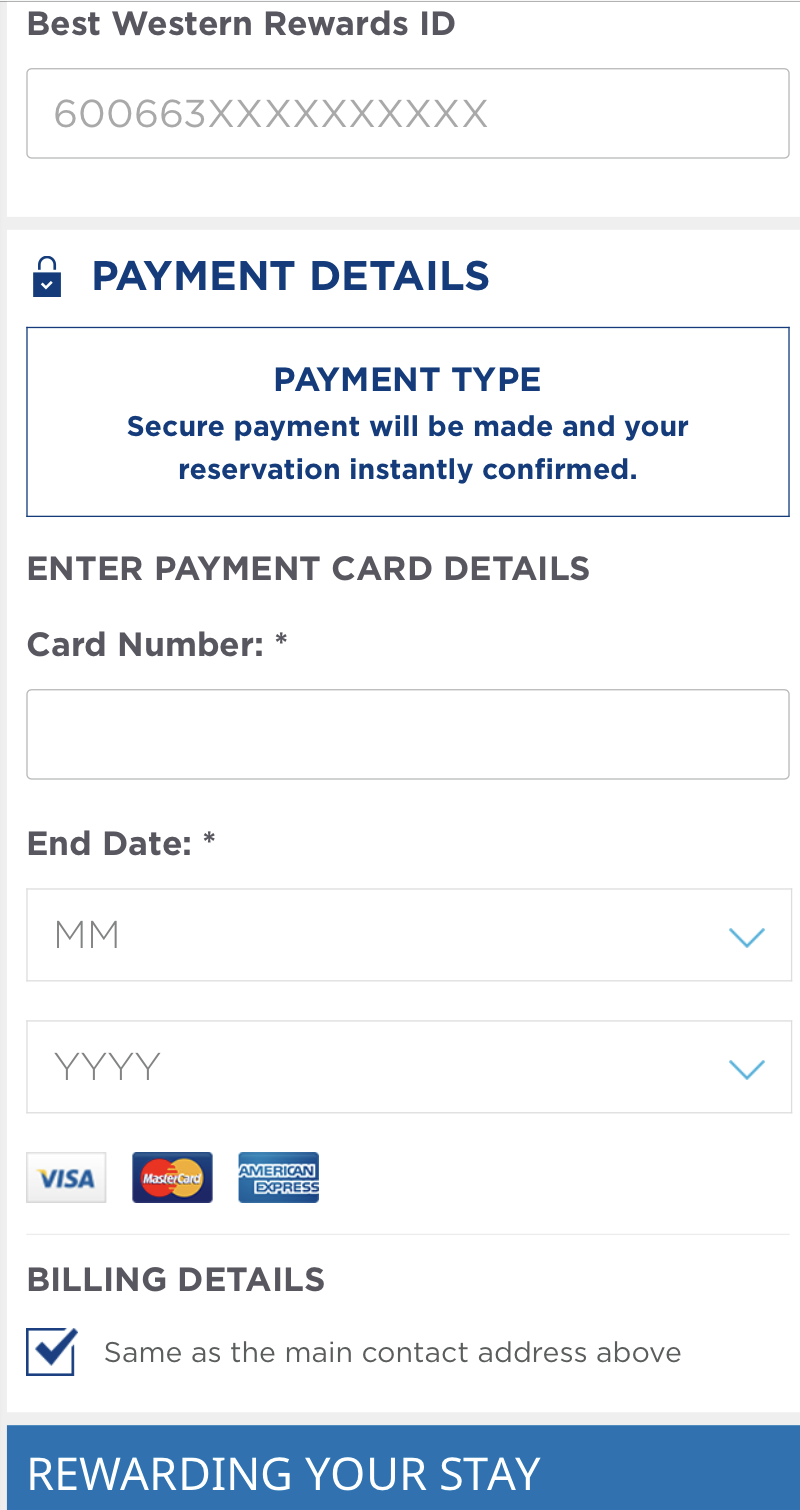

Smartphone features can also be used to simplify the process by speeding up data entry and reducing user effort and friction
For example, the scanning function on easyJet’s mobile app scans and populates the user’s passport data in around 20 seconds.
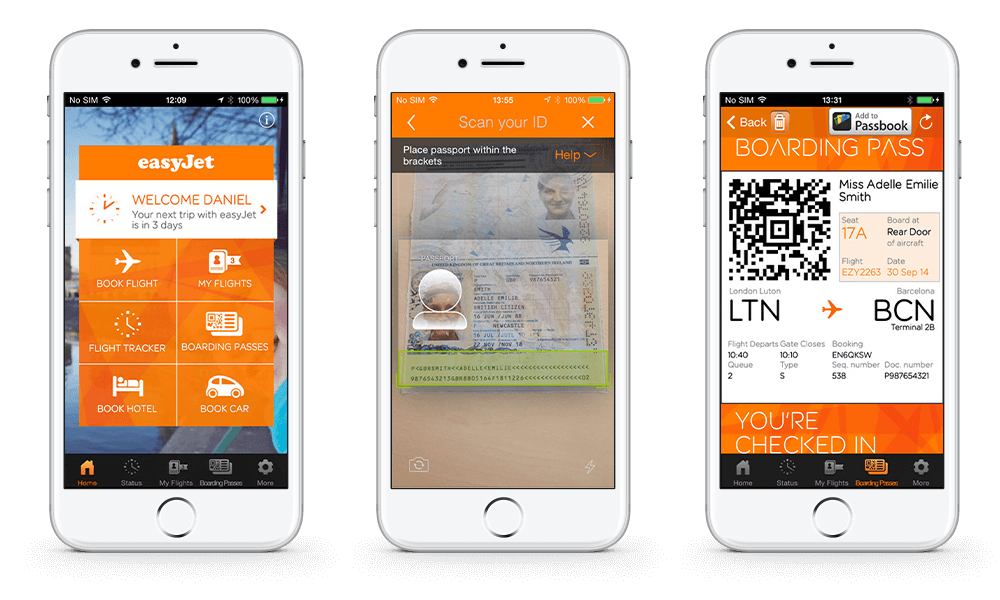

Mobile Conversion Messaging
Whether visitors are using mobile or desktop, conversion rate optimisation methods such as the use of urgency can still help to increase sales.
It’s important to ensure that these methods are designed for mobile too. Here, DFDS uses trends data to show the popularity of the cruise being considered, as well as offering to save booking details for later.
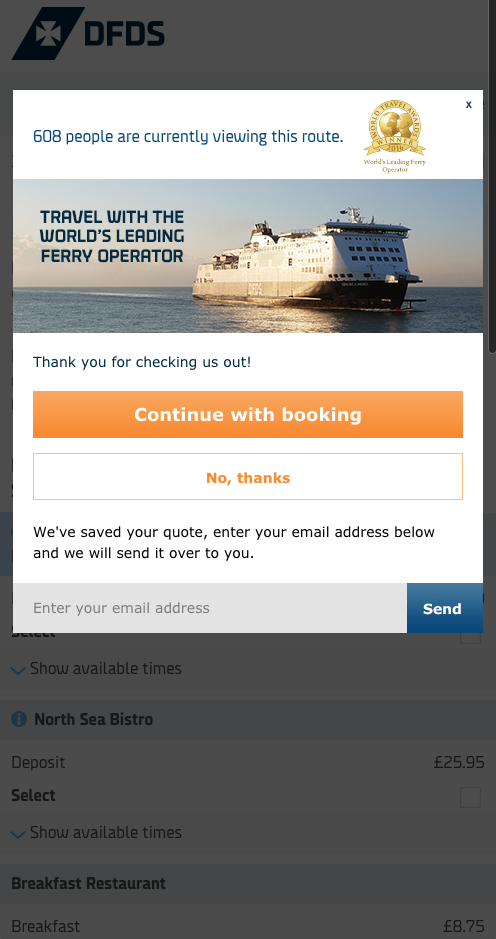

Saving details is important, especially in travel where people will often visit and abandon bookings before making a final decision.
Saving details allows retailers or travel sites to email customers to remind them of their booking, and helps to keep their brand in mind.
Urgency marketing such as countdown timers can also be used in mobile emails, highlighting the time before a sales period or special offer ends for example.
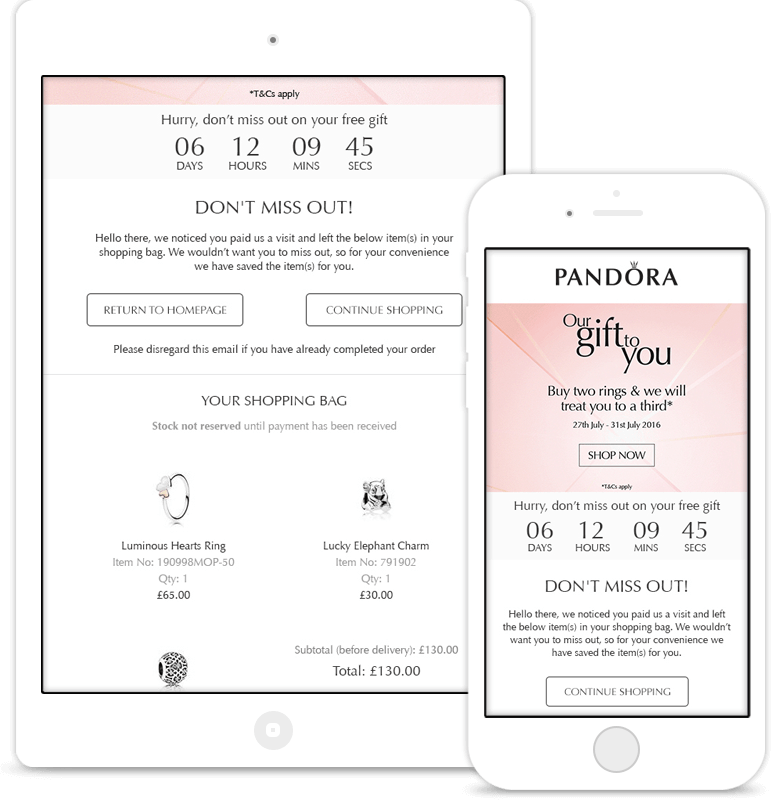

Provide a Choice of Payment Methods
A big part of checkout on mobile is entering payment details. This can be more time-consuming and potentially frustrating on a smaller screen, so any shortcuts help.
One option is to save customer payment details where possible, so they can login and checkout without the need to enter address and card details.
Another way is to provide a choice of payment options which offer useful shortcuts.
Popular digital wallet methods such as PayPal and Amazon Pay, as well as newer options from Visa and Mastercard mean that checkout is shortened to entering an email address and password.
Mobile methods such as Apple Pay and Google Pay can be even easier, with just the use of Face ID or a fingerprint scan to complete payment.
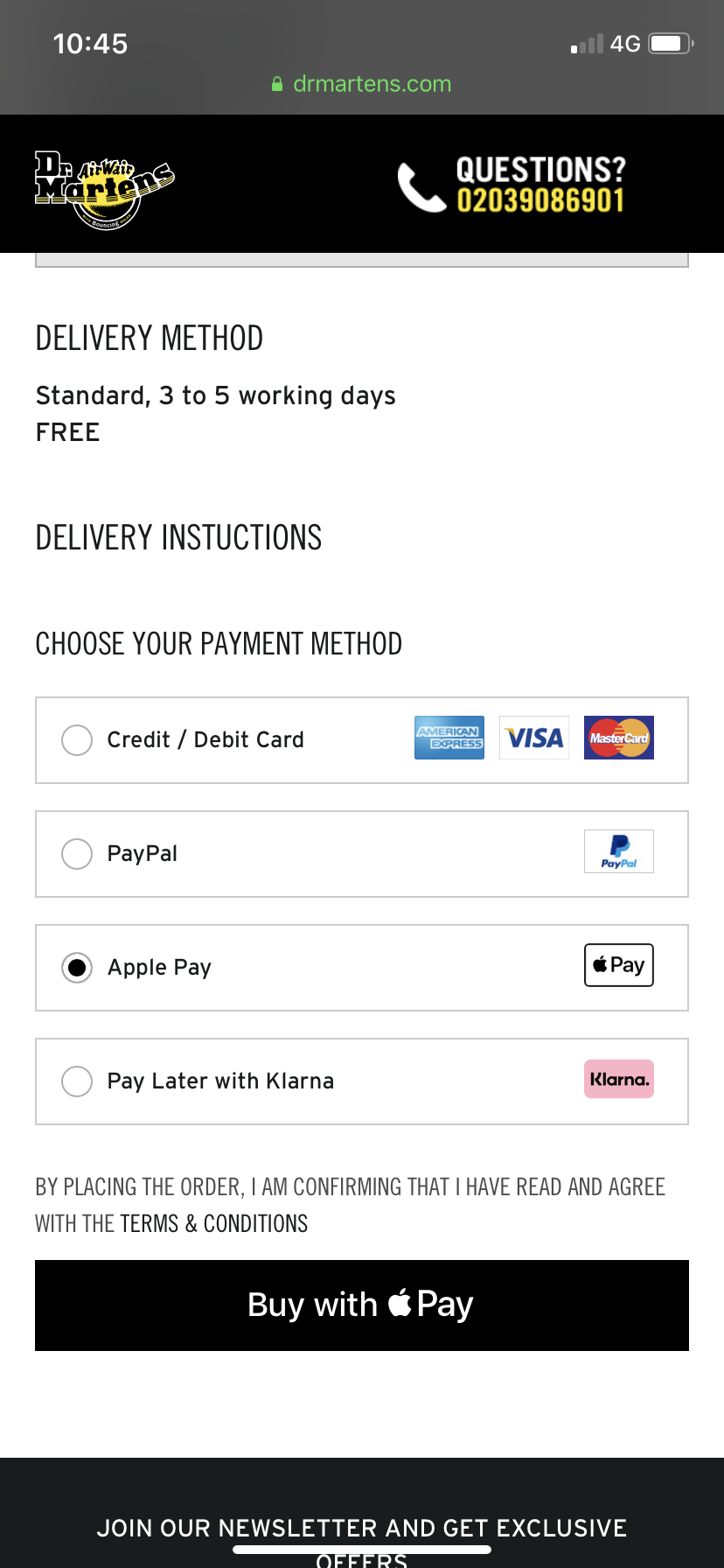

Want to talk about increasing conversion on your site?’
Just enter your email below and let’s talk about how you can help build trust and increase conversions.
Speak to an expert
Learn how to convert your online audience into revenue with our experts.


Casey Turnbull
Casey is a Fashion Journalism graduate & ecommerce marketing executive at SaleCycle. Casey is committed to producing high quality content backed by in-depth research and data. She has experience developing content in a range of sectors including fashion, ecommerce and sports.
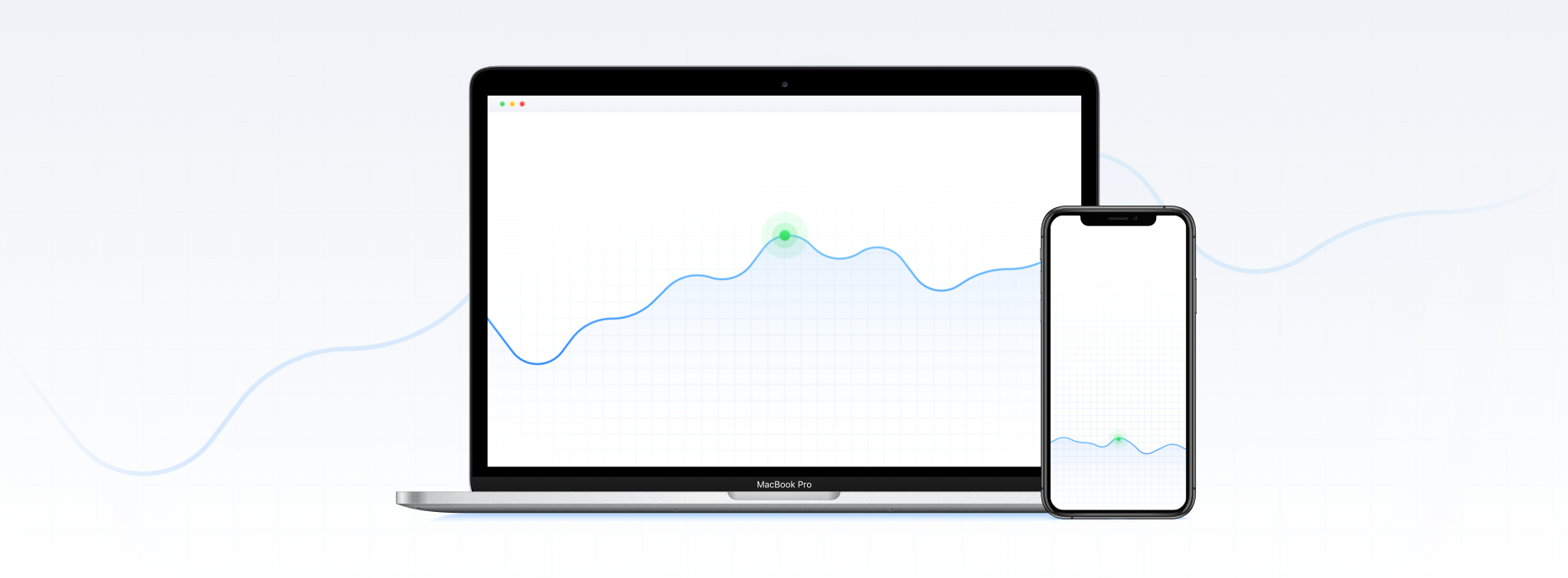








![Valentine’s Day Ecommerce Tips and Trends [2024 Strategy]](https://www.salecycle.com/wp-content/uploads/2019/01/valentines-ecommerce-1.png)




![How SaleCycle helped Vodafone increase their online sales by an additional 2,000 additional sales per month [Extended Version]](https://www.salecycle.com/wp-content/uploads/2023/08/vodafone-banner.webp)




